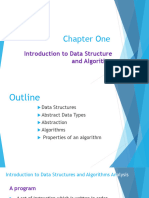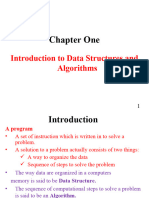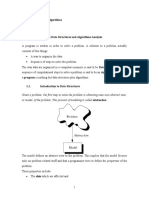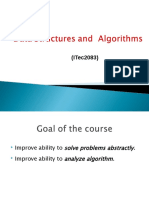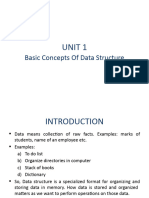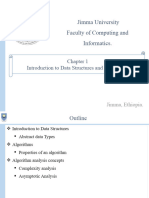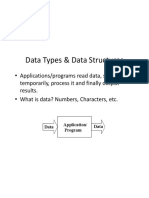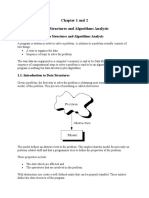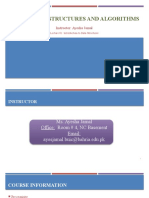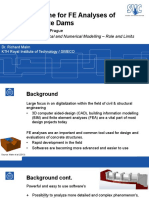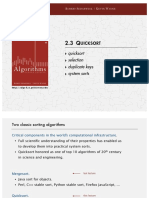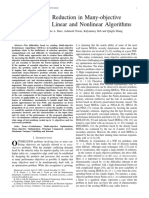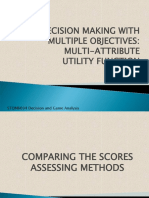0% found this document useful (0 votes)
48 views33 pagesLecture 1
The document introduces data structures and algorithms, emphasizing their importance in programming for organizing data and solving problems. It discusses concepts such as abstraction, abstract data types, and the properties of algorithms, including finiteness, definiteness, and efficiency. Additionally, it outlines the roles of static and dynamic data structures and their applications in various fields of computer science.
Uploaded by
Woldeab BisratCopyright
© © All Rights Reserved
We take content rights seriously. If you suspect this is your content, claim it here.
Available Formats
Download as PPTX, PDF, TXT or read online on Scribd
0% found this document useful (0 votes)
48 views33 pagesLecture 1
The document introduces data structures and algorithms, emphasizing their importance in programming for organizing data and solving problems. It discusses concepts such as abstraction, abstract data types, and the properties of algorithms, including finiteness, definiteness, and efficiency. Additionally, it outlines the roles of static and dynamic data structures and their applications in various fields of computer science.
Uploaded by
Woldeab BisratCopyright
© © All Rights Reserved
We take content rights seriously. If you suspect this is your content, claim it here.
Available Formats
Download as PPTX, PDF, TXT or read online on Scribd
/ 33


